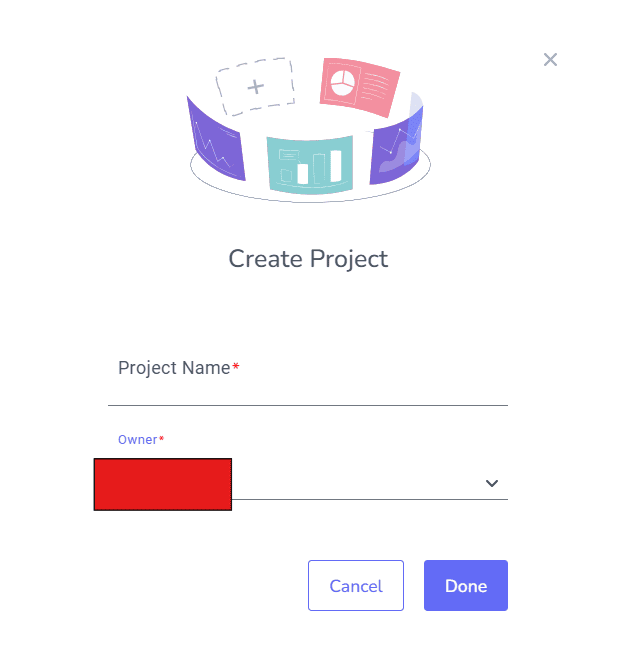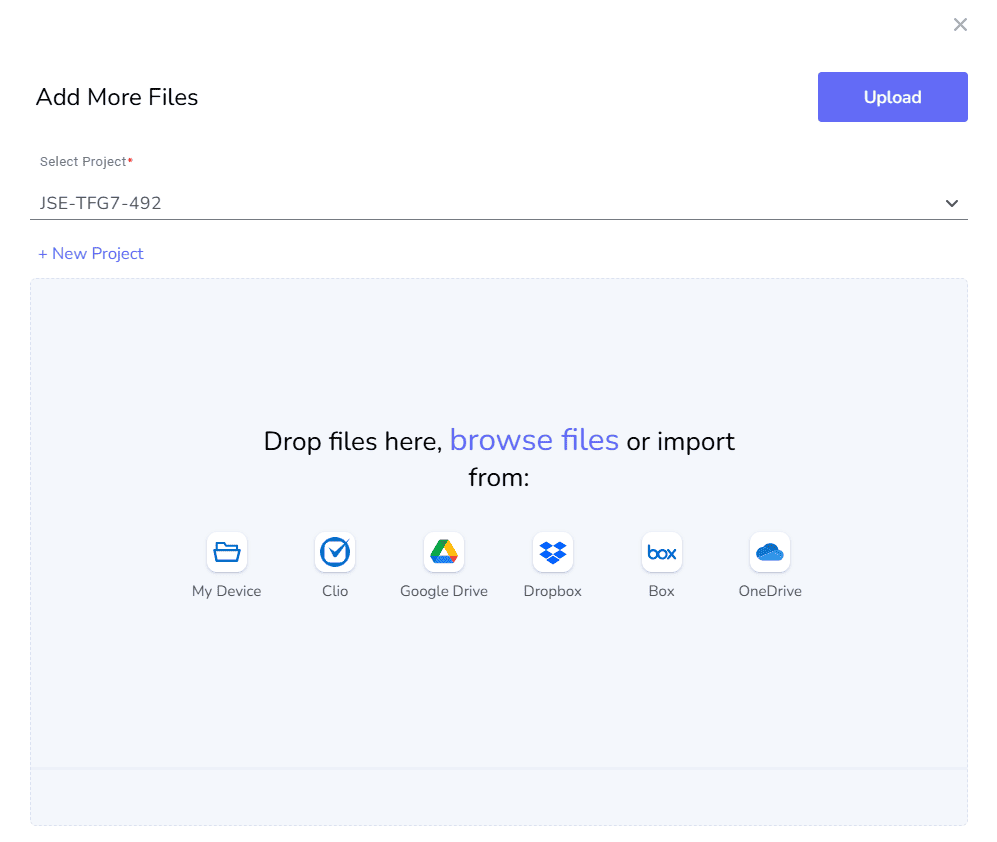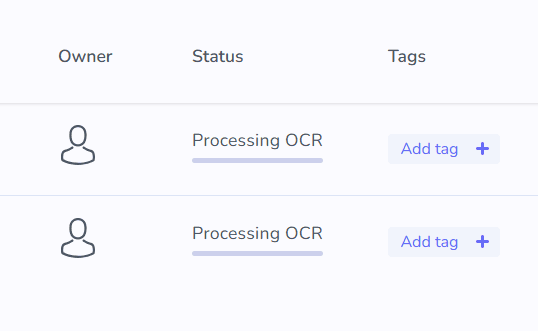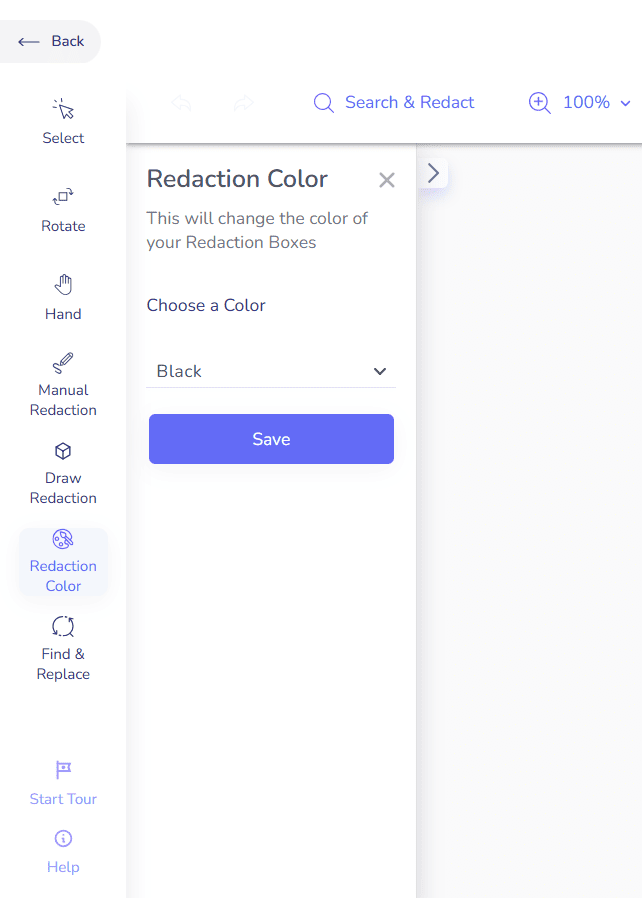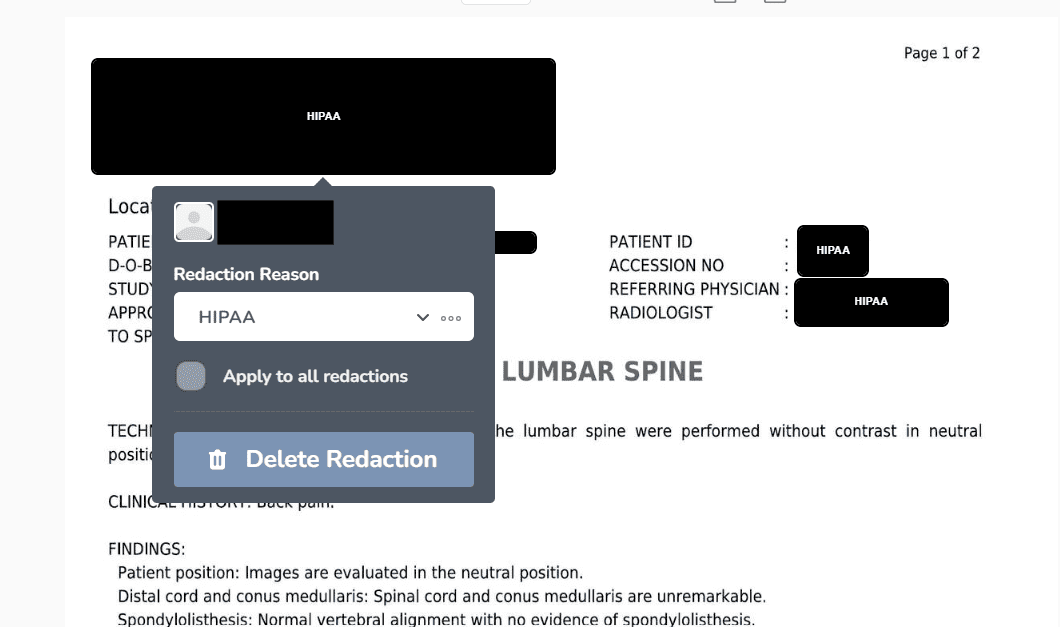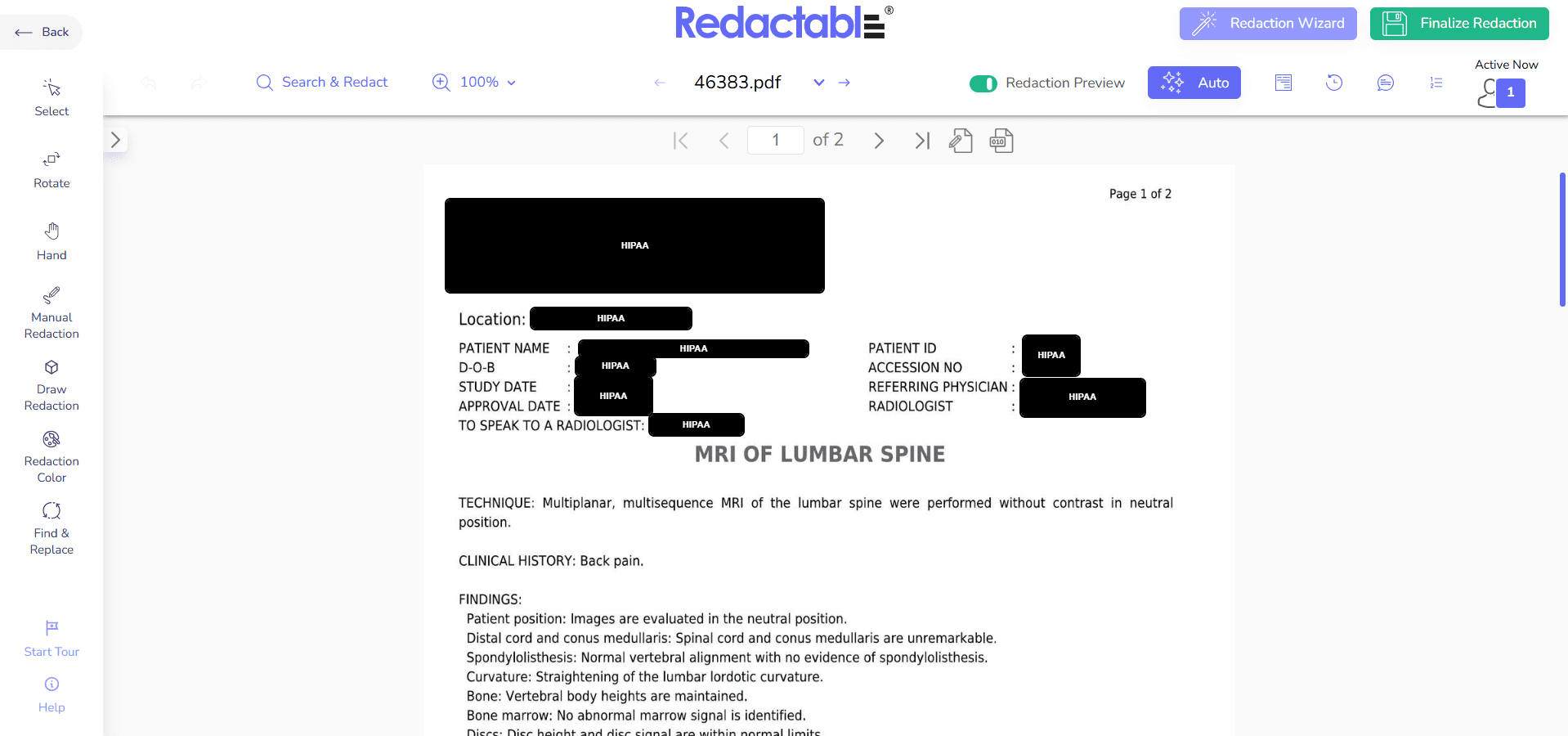Introduction to the Redaction Challenge in Law Practice
In the legal industry, managing sensitive information is both a critical responsibility and a significant challenge. When dealing with pre-litigation caseloads, particularly in high-stakes scenarios like defending pharmaceutical manufacturers and clinical trial agencies, the pressure to ensure accuracy and compliance with legal standards becomes even more pronounced. The stakes are high: improperly handled information could violate privacy laws, including the Health Insurance Portability and Accountability Act (HIPAA), and potential reputational and financial repercussions for all parties involved.
For our recent project, the redaction workload involved a vast volume of documents, encompassing personal details of multiple individuals, medical records, and confidential communications. These materials included:
- Protected Health Information (PHI): Names, dates of birth, Social Security numbers, and detailed medical histories requiring meticulous redaction to meet HIPAA standards.
- Attorney-Client Privilege Documents: Sensitive communications between the client and legal counsel, including parent emails and their associated attachments, required careful review and redaction to preserve privilege.
- High-Risk Sensitive Information: Data that, if mishandled, could expose clients to litigation risks or regulatory fines, further compounding the complexity of the task.
Adding to the challenge was the sheer size of the caseload. With thousands of documents to process within a limited timeframe, the project exceeded the bandwidth of a law firm’s traditional manual redaction processes. Manually combing through this volume of information, document by document, increased the risk of oversight and errors while posing significant delays in meeting the project’s deadlines.
This combination of factors—volume, complexity, sensitivity, and urgency—underscored the critical need for a redaction solution that could guarantee both speed and precision. Enter Redactable, a tool to redact PDF and other major file types, proved to be a transformative asset in tackling the challenges of this intricate project.
The Complexity of HIPAA Compliance in Pre-Litigation Cases
HIPAA compliance is a cornerstone of handling sensitive health information in legal matters. In pre-litigation cases, this compliance becomes even more challenging due to the sheer volume and complexity of the data involved. The legal teams defending clients in cases tied to healthcare, pharmaceuticals, or clinical trials must ensure that all Protected Health Information (PHI) is meticulously redacted before documents are shared with opposing counsel, courts, or external parties.
The intricacies of HIPAA compliance lie in the need to identify and remove a wide range of personal identifiers from records. This includes not only names, Social Security numbers, and dates of birth but also indirect identifiers like geographic information, email addresses, and medical record numbers. Each piece of PHI poses a unique risk of breaching privacy if it remains visible, requiring a thorough and careful review.
In the case we managed, the pre-litigation caseload included hundreds of emails, attachments, and medical records related to clinical trial participants. These records contained overlapping identifiers, making the redaction process more complicated. Additionally, maintaining the integrity and usability of the documents while ensuring compliance added another layer of complexity.
Further, the legal documents often included:
- Embedded Data: Sensitive information hidden in metadata, requiring advanced tools to identify and redact.
- Handwritten Notes: Scanned handwritten comments on medical records and documents, adding to the difficulty of detection through manual methods.
- Duplicated Information: Repeated instances of PHI across different documents that still needed consistent redaction.
Balancing the dual priorities of protecting individual privacy and meeting the legal obligations for discovery demanded a solution capable of addressing these challenges comprehensively. Manual redaction methods, while effective for small-scale projects, proved inefficient and error-prone for a caseload of this magnitude.
The Stakes for Law Firms and Their Clients in Sensitive Lawsuits
In sensitive lawsuits, such as those involving healthcare and clinical trials, the stakes are extraordinarily high for both law firms and their clients. Any mishandling of Protected Health Information (PHI) or privileged documents can lead to severe consequences, including legal penalties, regulatory fines, and reputational damage. For clients like pharmaceutical manufacturers and clinical trial agencies, these risks are compounded by the potential exposure of proprietary or confidential data.
For law firms, ensuring flawless redaction is not just about compliance—it’s about maintaining credibility and trust. An oversight in redaction can derail a case, harm client relationships, or even result in malpractice claims. The pressure to deliver error-free results within tight deadlines underscores the need for advanced tools that streamline and safeguard the process.
About the HIPAA Redaction Project
Overview of the Case: Defending a Pharmaceutical Manufacturer and Clinical Trial Agency
Our client, a prominent pharmaceutical manufacturer, partnered with a clinical trial agency to test the efficacy and safety of a newly developed drug. This drug was designed to address a chronic medical condition affecting thousands of patients across the United States. To ensure comprehensive testing, the clinical trials involved diverse subjects from various states, making the data collected both extensive and highly sensitive.
As part of the litigation, the clients faced allegations related to adverse outcomes reported during the trials. The case required the review and redaction of a significant volume of documents, including participant records, consent forms, internal communications, and trial data. These materials not only contained Protected Health Information (PHI) but also proprietary research data critical to the client’s intellectual property.
The defense team needed to balance the dual imperatives of protecting sensitive health information under HIPAA regulations and preserving the confidentiality of the client’s innovative research. This complex, large-scale caseload called for a precise and efficient redaction solution to meet both compliance standards and litigation timelines.
The Scope of the Pre-Litigation Caseload
The pre-litigation caseload for this project was vast and multifaceted, consisting of over 250,000 pages of data spread across more than 10,000 documents. These documents were in diverse formats, including PDFs, DOCX files, and email threads with multiple attachments.
The sheer volume and variety of the documents made the task daunting. Managing this workload manually would have been both time-intensive and prone to human error, jeopardizing compliance and case deadlines. This scale of complexity underscored the necessity for an advanced redaction software that could handle large data sets with speed and precision.
Key Challenges in Redacting Protected Health Information (PHI)
Redacting Protected Health Information (PHI) in the caseload presented several challenges due to the complexity and diversity of the documents. Each challenge required careful attention to ensure full compliance with HIPAA regulations while maintaining the integrity of the data. Some of the key challenges included:
- Handwritten Initials and Names: Many documents contained handwritten notes, initials, and signatures that were difficult to detect using traditional search methods. These elements required advanced optical character recognition (OCR) capabilities for accurate redaction.
- Digital Signatures and Embedded Metadata: Redacting digital signatures and metadata embedded in documents was critical to prevent inadvertent disclosure of sensitive information.
- Scanned and Illegible Documents: Several documents were scanned copies of medical records, many of which were blurred or illegible, making it challenging to identify and redact PHI accurately.
- Isolated Patient Details: Information like patient dates of birth (DOB) or admission and discharge dates often appeared without accompanying names, requiring additional scrutiny to ensure they were properly redacted.
- Hospital Names and Identifiers: The names of hospitals, clinics, and trial sites, which could indirectly identify patients or clinical trial participants, needed thorough redaction across all documents.
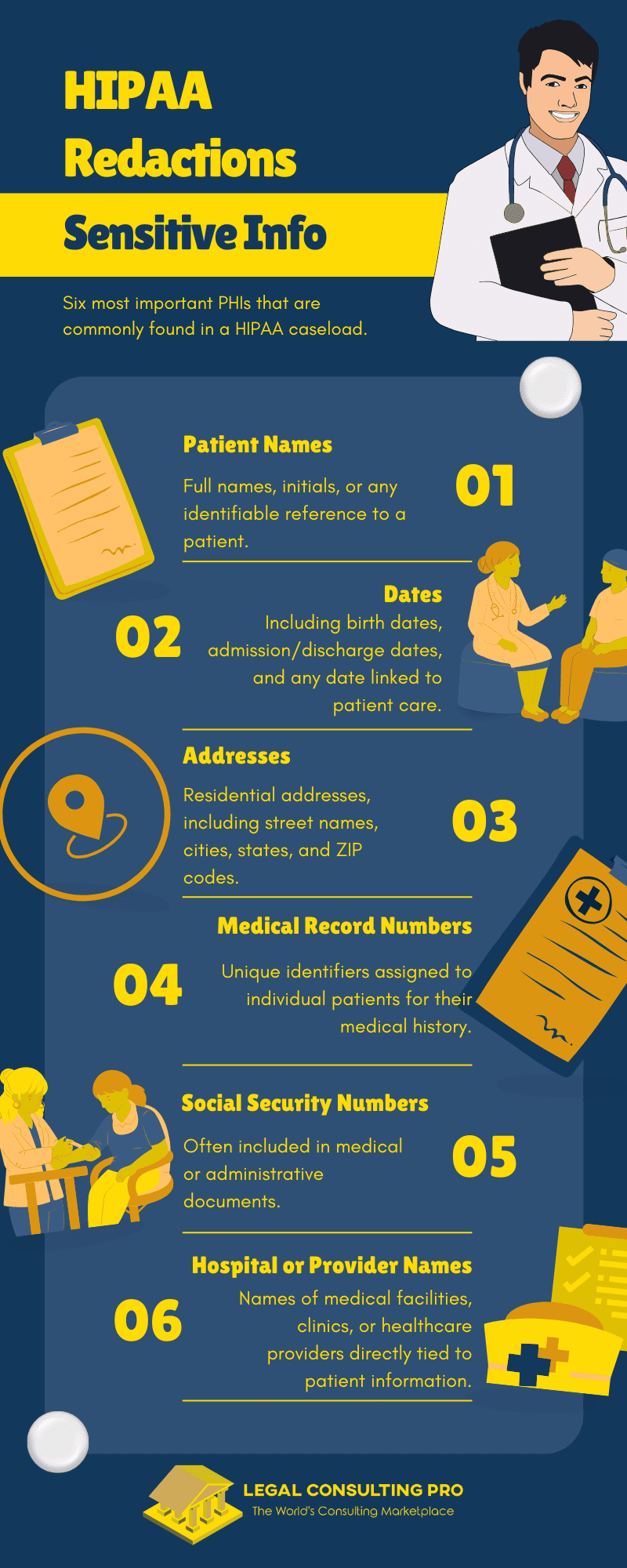
Why We Chose Redactable for the Project
Key Features That Set Redactable Apart
Redactable offers several powerful features that set it apart in the realm of document redaction, making it an ideal solution for complex legal projects like HIPAA compliance in pre-litigation cases. Here’s a look at the key features that contributed to the success of our redaction efforts:
- Redaction Wizard for Manual, Text, Categories, and Automatic Redaction: Redactable provides a versatile approach to redacting documents, allowing users to manually select sensitive information, use text-based searches, categorize data for batch redactions, and even automate redaction based on predefined rules.
- AI for Sensitive Info: Leveraging advanced AI technology, the tool intelligently identifies sensitive information across documents. By using tags, projects, and statistical analysis, it can detect and classify PHI, confidential data, and privileged content with impressive accuracy.
- AI OCR Engine: The built-in Optical Character Recognition (OCR) engine enhances the tool’s ability to recognize and redact text in scanned documents, including handwritten notes and hard-to-read files, ensuring that even non-digital content is thoroughly protected.
- Workflow Management: Redactable offers robust workflow features that allow users to set up a hierarchy of folders, control document versions, and manage project timelines. This feature ensured that our team could maintain organization and streamline redaction efforts across thousands of documents.
- Collaboration Features: With cloud-based integration, the tool supports collaboration among multiple team members. Users can leave comments, track revisions, and manage user roles, ensuring seamless communication and accountability throughout the redaction process.
- Audit Trail for Discovery and Retention Policies: The audit trail functionality keeps detailed logs of all actions taken on each document, ensuring compliance with discovery and retention policies. This feature adds an extra layer of security and transparency, essential for legal work.
- Metadata Scrubbing: The tool automatically scrubs metadata, ensuring that sensitive details embedded in document properties—such as author names, revision histories, and hidden comments—are also redacted before the document is shared or submitted.
- OneDrive Integration for Enhanced Security: The OneDrive integration allows for seamless, secure document storage and sharing across the organization. This feature enhances security at the organizational level by ensuring that all data is encrypted and accessible only to authorized personnel.
Alignment with HIPAA Compliance and Legal Standards
Redactable is fully aligned with HIPAA compliance standards, ensuring that all Protected Health Information (PHI) is handled securely and following the stringent privacy requirements of the healthcare industry. The tool’s features, such as secure redaction, audit trails, and metadata scrubbing, were designed with compliance in mind, reducing the risk of potential breaches.
In addition to HIPAA compliance, Redactable is also SOC 2 Type 2 compliant, further validating its security and privacy controls. This certification ensures that the tool adheres to rigorous standards for data protection, making it a trusted solution for legal professionals handling sensitive client information.
The tool also offers seamless Electronic Health Record (EHR) integration, allowing users to directly access and redact medical records from EHR systems. This integration streamlines the workflow, ensuring that PHI is securely managed throughout the legal process while maintaining compliance with both healthcare and legal regulations.
Deployment of Redactable in the Project
Initial Setup and Onboarding Process
Getting started with Redactable was a straightforward and efficient process, designed to accommodate the complexity and scale of our HIPAA redaction project. Here’s how we set up and onboarded the tool for our caseload:
- Creating an Account Tailored to the Caseload Size: The first step was to create an account that matched the scope of our project. With over 250,000 pages of data to manage, we selected a plan designed for high-volume redaction projects, ensuring we had the necessary storage and processing power to handle the workload seamlessly.

Redactable Create Project - Uploading Files from Multiple Sources: The tool’s flexible upload options allowed us to import documents from a variety of sources, including files stored on local devices, as well as cloud platforms like Clio, Google Drive, OneDrive, Box, and Dropbox. This streamlined process ensured that all relevant data could be consolidated into one secure platform for redaction.

Redactable File Upload Page - Automatic OCR on All Uploaded Files: Once the files were uploaded, Redactable’s advanced OCR engine automatically processed each document. This step converted scanned files and images into searchable text, enabling precise and comprehensive redaction. The automated OCR eliminated the need for manual intervention, saving significant time and effort during the onboarding phase.

Redactable OCR Processing
Workflow Integration for Seamless Document Redaction
Redactable seamlessly integrates into your document review and redaction workflow, offering flexibility and customization to suit project-specific needs. Here’s how we utilized its features to efficiently manage our redaction process:
- Selecting Manual or Automatic Redaction: After uploading the documents, we assessed the quality and legibility of each file. For clear and structured documents, the automatic redaction feature was employed, leveraging the tool’s AI to identify and redact sensitive information. For scanned or less legible documents, manual redaction allowed us to make precise edits, ensuring no critical data was overlooked.

Redactable Redaction Wizard - Customizing the Redacted Area Block Color: To align with the project’s visual requirements, we customized the redacted area block color (Black). This feature ensured the redactions were visible while maintaining a professional and standardized appearance throughout the documents.

Redactable Redaction Color Selector - Adding Redaction Reasons: The tool enabled us to annotate each redacted area with a reason for the redaction. For this project, we added “HIPAA” as the redaction reason to highlight compliance with privacy regulations. This annotation provided context to all stakeholders while maintaining transparency.

Redactable Redaction Reason Box - Applying Redaction Reasons Consistently: To save time and maintain uniformity, we applied the “HIPAA” redaction reason across all redacted blocks. This feature streamlined the process, ensuring that every redacted element communicated its purpose without the need for repetitive manual input.

Redacted Document Example
By integrating these workflow features, Redactable made the redaction process intuitive, efficient, and tailored to the specific requirements of our HIPAA compliance project.
How the Tool Addressed Specific Pain Points
The deployment of Redactable proved transformative in overcoming the key challenges of our HIPAA redaction project. By leveraging its advanced features, the tool addressed critical pain points efficiently and effectively:
- Faster Redaction Process: Compared to traditional methods like Adobe, the tool enabled us to redact documents up to 98% faster. Its automated redaction capabilities and intuitive workflows allowed our team to process over 250,000 pages in a fraction of the time, meeting tight deadlines without compromising accuracy.
- Protection of Sensitive Patient Information: The tool’s robust AI-driven redaction ensured that all Protected Health Information (PHI)—including patient names, dates of birth, and medical record numbers—was securely redacted. This minimized the risk of accidental disclosures while handling large volumes of data.
- Maintaining HIPAA Compliance: With features designed specifically for healthcare-related projects, the tool ensured full compliance with HIPAA regulations. By providing audit trails, metadata scrubbing, and accurate redaction, it safeguarded sensitive health data throughout the litigation process.
- Safeguarding Client Reputation: Protecting the privacy of clinical trial participants and other stakeholders was critical for our pharmaceutical and clinical trial clients. The tool’s meticulous redaction capabilities helped prevent legal penalties and public scrutiny, preserving its reputation in a highly sensitive lawsuit.
- Operating at the Highest Level of Security: The tool’s compliance with HIPAA and SOC 2 Type 2 standards demonstrated its commitment to maintaining the highest security levels. This assurance gave both our team and our clients confidence that their data was being handled securely and professionally.
Conclusion: A Transformative Redaction Experience
Reflecting on the Success of the Project
The completion of this HIPAA redaction project demonstrated how Redactable transformed a complex legal challenge into a seamless process. With its advanced features, we delivered over 250,000 pages of accurately redacted documents within tight deadlines, ensuring full HIPAA compliance and safeguarding sensitive PHI and proprietary client data. The tool’s AI-driven accuracy and streamlined workflow minimized errors, enhanced collaboration, and maintained organization throughout the project. By protecting sensitive information and meeting compliance standards, we not only ensured client satisfaction but also preserved their reputation in high-stakes litigation. This success underscores the value of leveraging innovative technology for efficient and secure legal solutions.
Our Advice for Selecting the Right Redaction Tool
Choosing the right redaction tool is critical to the success of any project involving sensitive information. Based on our experience with Redactable, we recommend prioritizing tools that offer a blend of automation, accuracy, and compliance features tailored to your specific needs. Look for solutions that can handle large datasets, provide AI-driven redaction capabilities, and include robust collaboration and audit trail features to ensure security and transparency.
For those considering a versatile solution, Redactable excels across various industries and use cases. In addition to HIPAA compliance, it works seamlessly for projects involving FOIA requests, finance, government records, insurance documents, real estate transactions, and recruitment processes. Its flexibility makes it a valuable asset for professionals dealing with diverse and sensitive data.
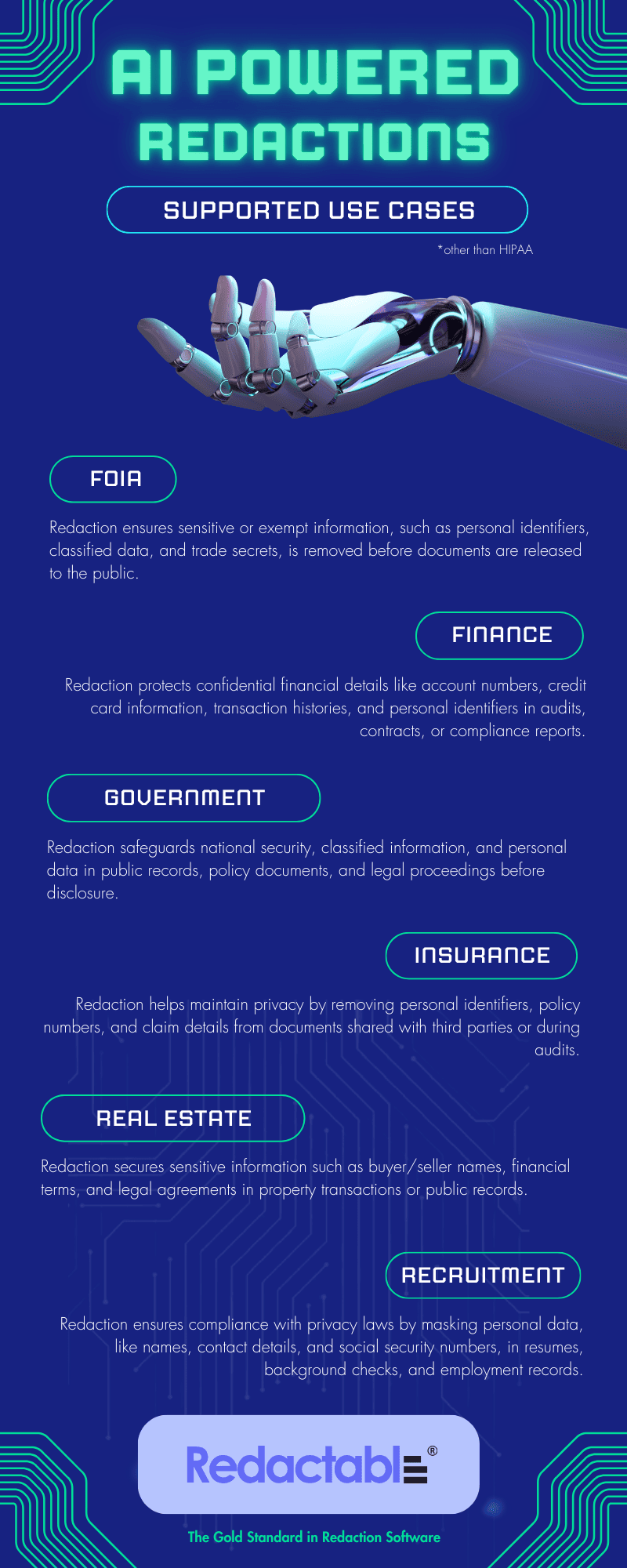
By evaluating your project requirements and selecting a tool designed for efficiency and compliance, you can streamline your workflow and ensure optimal results, no matter the industry or use case.
Encouraging Legal Professionals to Embrace Innovative Solutions
The success of our HIPAA redaction project highlights the transformative impact of adopting cutting-edge tools like Redactable. In an era where legal projects increasingly involve massive datasets, stringent compliance requirements, and tight deadlines, relying solely on traditional methods can be both inefficient and risky.
By embracing innovative solutions, attorneys can enhance accuracy, improve workflow efficiency, and ensure the highest levels of security for sensitive information. Tools equipped with AI, automation, and robust compliance features not only save time but also empower teams to handle complex caseloads with confidence.
Investing in advanced technology is no longer optional; it’s a necessity for staying competitive and delivering exceptional client service. We encourage legal professionals to explore and integrate such solutions into their practice, transforming challenges into opportunities for efficiency and growth.



